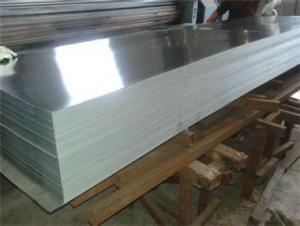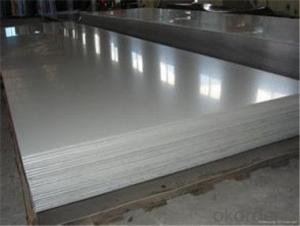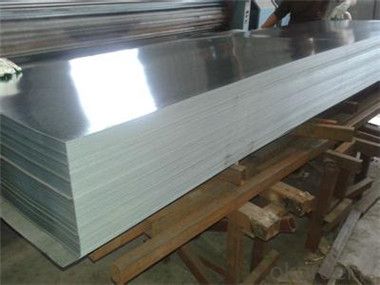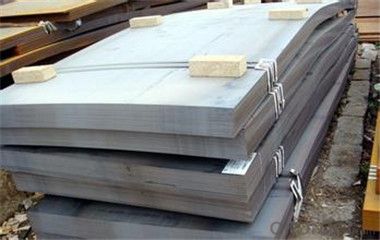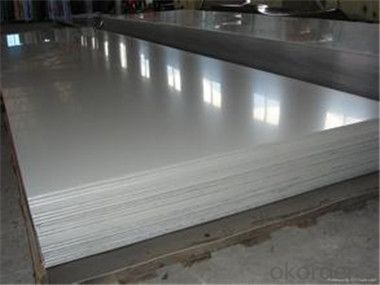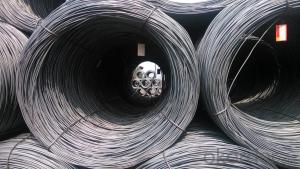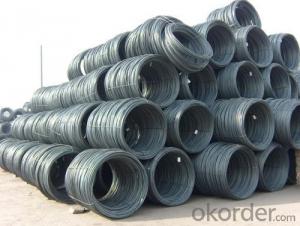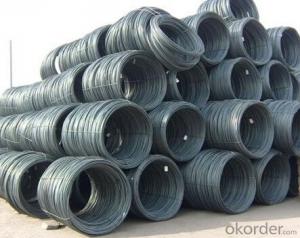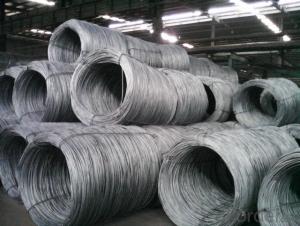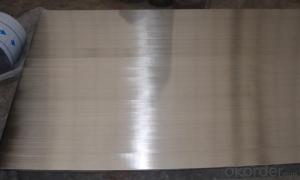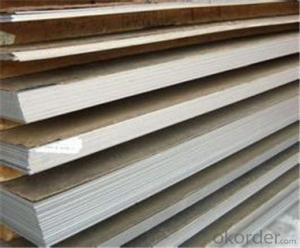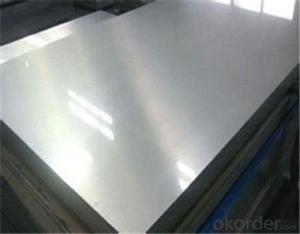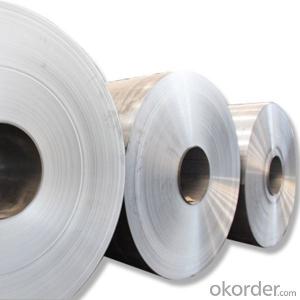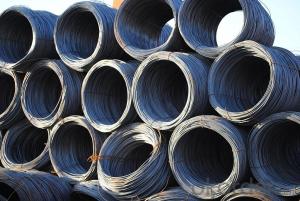Stainless Steel Sheet SS305 with Best Quality in China
- Loading Port:
- Tianjin
- Payment Terms:
- TT OR LC
- Min Order Qty:
- 50 m.t.
- Supply Capability:
- 45555555 m.t./month
OKorder Service Pledge
OKorder Financial Service
You Might Also Like
Specification
Description of stainless steel plate:
stanless steel sheet roll
Manufacturer since 2003;
Origin from Baosteel & Tisco;
100% Manufacture's direct deal.
Festures of stainless steel plate:
| Packaging Details: | standard packing to export 4 eye bands and 3 circumferential bands in steel, galvanized metal fluted rings on inner and outer edges, galvanized metal & waterproof paper wall protection disk, galvanized metal & waterproof paper around circumference |
| Delivery Detail: | 15-25 days after received your deposit or to your quantity |
Specifications of stainless steel plate:
Product Name | cr 1219x2438 stanless steel sheet 201 |
standared | JIS, AISI, ASTM, GB, DIN,SUS |
Thickness | 0.2mm~2.5mm |
Size | 1000*2000mm,1219*2438mm or as per customers' request |
Surface finish | 2B, BA, Hair Line, No.1,No.4, Mirror Finish |
Application | Kitchenware, decoration construction and building ornament, product parts manufacturing and stainless steel products tooling and so on |
Payment terms | T/T 30% for deposit, Balance against the copy of B/L; or L/C at sight |
Product Packing | wooden pallet |
Delivery time | within 15-20 working days after we got your 30% deposit |
Attention | FREE SAMPLES can be sent on request. |
Images of stainless steel plate:
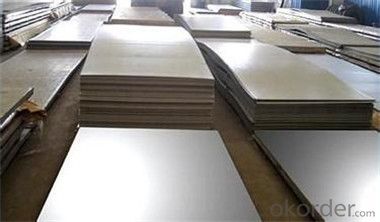
FAQ:
1. What is your package?
Packing situation: standard seaworthy packing or as customer required.
2. How long is the lead time?
Delivery time: 45 days after order confirmed.
3. What payment term do you accept?
Payment: T/T or L/C at sight.
- Q: How are steel wire rods used in the production of wire coat hangers?
- Wire coat hangers require steel wire rods as a crucial component for their production. These rods function as the primary material for constructing the robust and long-lasting frame of the hanger. To initiate the manufacturing process, careful selection of steel wire rods based on their quality and strength is necessary. Subsequently, the rods are fed into a wire drawing machine, which pulls them through a sequence of dies to decrease their diameter and increase their length. This operation, known as wire drawing, achieves the desired thickness and shape for the coat hanger. Once the wire rods have been successfully drawn, they are then cut into specific lengths according to the desired size of the hanger. These cut rods are subsequently transferred to a bending machine, where they are molded into the recognizable triangular structure of a coat hanger. The bending process involves applying precise pressure and force to the wire rods, enabling them to assume the desired shape while retaining their structural integrity. Following the bending process, the wire coat hangers may undergo additional treatments, such as polishing or coating, which serve to enhance their appearance and safeguard them against rust or corrosion. These finishing touches significantly contribute to the overall aesthetic appeal and durability of the hangers. In summary, steel wire rods serve as the primary material in the production of wire coat hangers. Through a series of processes, including wire drawing and bending, these hangers are manufactured to provide a sturdy and dependable solution for organizing and hanging clothing items, while maintaining their shape and durability over an extended period.
- Q: What are the different tensile testing methods for steel wire rod?
- Some common tensile testing methods for steel wire rod include the straightening and tensile testing method, the axial tensile testing method, and the wire drawing tensile testing method.
- Q: How is steel wire rod used in the manufacturing of wire for telecommunications cables?
- Steel wire rod is an essential component in the manufacturing of wire for telecommunications cables. The process begins with the production of steel wire rod, which is a long, cylindrical billet made of steel. This wire rod is then processed and transformed into a wire that is suitable for telecommunications cables. To manufacture wire for telecommunications cables, the steel wire rod undergoes several steps. Firstly, it is cleaned and descaled to remove any impurities that may affect the quality of the wire. The wire rod is then heated and passed through a series of rollers to reduce its diameter and increase its length. This step is known as wire drawing and is crucial in achieving the desired thickness and strength of the wire. Once the wire has been drawn to the required size, it is further processed to ensure its quality and reliability. The wire is annealed, a process in which it is heated and slowly cooled to relieve internal stresses and enhance its flexibility. This makes the wire more suitable for handling and installation in telecommunications cables. After annealing, the wire is coated with a layer of insulation material, such as polyethylene or polyvinyl chloride (PVC). This insulation provides electrical insulation and protects the wire from external factors that may damage its conductivity, such as moisture or extreme temperatures. The final step in the manufacturing process is to twist multiple wires together to form a cable. Steel wire rod is used as the core strength member within the cable, providing structural support and tensile strength. This ensures that the cable can withstand the tension and bending forces it may encounter during installation and operation. In summary, steel wire rod is a crucial component in the manufacturing of wire for telecommunications cables. It undergoes a series of processes, including cleaning, wire drawing, annealing, and insulation, to create a wire that is suitable for use in telecommunications applications. The strength and reliability of steel wire rod make it an ideal choice for providing the necessary structural support and durability required in telecommunications cables.
- Q: How is steel wire rod classified based on its carbon content?
- Steel wire rod can be classified based on its carbon content into three main categories: low carbon wire rod, medium carbon wire rod, and high carbon wire rod. Low carbon wire rod typically contains carbon levels ranging from 0.05% to 0.15%. It is characterized by its high ductility and excellent formability. This type of wire rod is commonly used in applications that require flexibility and bending, such as in the manufacturing of wires for fencing, nails, and construction materials. Medium carbon wire rod contains carbon levels ranging from 0.15% to 0.45%. It possesses higher strength and hardness compared to low carbon wire rod. Medium carbon wire rod is often used in applications that require both strength and flexibility, such as in the production of automotive parts, springs, and certain types of fasteners. High carbon wire rod has carbon levels ranging from 0.45% to 0.85%. It is known for its exceptional strength and hardness. High carbon wire rod is typically used in applications that require maximum strength, such as in the production of high-tensile wires used for suspension bridges, pre-stressed concrete structures, and wire ropes used in heavy machinery. The classification of steel wire rod based on carbon content allows manufacturers and consumers to choose the appropriate grade of wire rod for their specific needs, considering factors such as strength, flexibility, and durability requirements.
- Q: How is the surface roughness of steel wire rod controlled during manufacturing?
- The surface roughness of steel wire rod is controlled during manufacturing through various processes such as cleaning, descaling, and polishing. These processes remove any impurities, scale, or oxide layers from the surface, resulting in a smoother and more uniform finish. Additionally, the use of specialized rolling mills and techniques helps in achieving the desired surface roughness by controlling the pressure and speed of the rolling process.
- Q: What is the difference between hot rolled and cold drawn steel wire rod?
- Hot rolled and cold drawn steel wire rods are both used in various industries for different applications. The main difference between the two lies in the manufacturing process. Hot rolled steel wire rod is produced by heating a billet or ingot to a high temperature and then rolling it through a series of rollers to achieve the desired shape and dimensions. This process results in a larger diameter and a rougher surface finish. Hot rolled steel wire rods are commonly used in construction, automotive, and machinery applications where strength and durability are important. They are also more cost-effective than cold drawn wire rods. On the other hand, cold drawn steel wire rod is produced by pulling the hot rolled wire rod through a series of dies at room temperature. This process results in a smaller diameter and a smoother surface finish compared to hot rolled wire rods. Cold drawn wire rods are commonly used in applications where precision and a smooth surface finish are required, such as in the manufacturing of precision components, automotive parts, and electrical conductors. In summary, the main difference between hot rolled and cold drawn steel wire rods is the manufacturing process, which affects the diameter, surface finish, and application suitability. Hot rolled wire rods are larger in diameter with a rougher surface finish, while cold drawn wire rods are smaller in diameter with a smoother surface finish. The choice between the two depends on the specific requirements of the application in terms of strength, precision, and surface finish.
- Q: What are the common bending methods for steel wire rod?
- The common bending methods for steel wire rods include cold bending, hot bending, and rotary bending.
- Q: What are the different types of steel wire rod surface cleaning methods after wire drawing?
- There are several different types of steel wire rod surface cleaning methods that can be employed after wire drawing to ensure the wire is free from any contaminants or impurities. 1. Mechanical Cleaning: This method involves physically removing any dirt, dust, or other particles from the wire surface using mechanical means such as brushes, air blasts, or abrasive materials. This method is effective in removing larger particles and debris. 2. Chemical Cleaning: Chemical cleaning methods use various cleaning agents or solvents to dissolve or remove any oils, grease, or other contaminants from the wire surface. These cleaning agents can be applied through spraying, immersion, or brushing, and are often followed by rinsing to ensure all residues are removed. 3. Electrolytic Cleaning: This method utilizes an electrolyte solution and an electric current to remove surface contaminants. The wire is submerged in the electrolyte solution and the electric current causes the contaminants to dissolve and separate from the wire surface. This method is effective in removing very thin layers of contaminants. 4. Pickling: Pickling is a specific type of chemical cleaning that involves immersing the wire in an acid solution to remove any oxide layers or scales that may have formed during the wire drawing process. The acid reacts with the oxides, dissolving them and leaving the wire surface clean and ready for further processing. 5. Ultrasonic Cleaning: Ultrasonic cleaning utilizes high-frequency sound waves to create tiny bubbles in a cleaning solution. These bubbles implode near the wire surface, creating a scrubbing action that helps to dislodge and remove contaminants. This method is particularly effective in cleaning wire surfaces with complex geometries or hard-to-reach areas. It is important to note that the choice of cleaning method will depend on the specific requirements of the wire application and the nature of the contaminants present. Each method has its own advantages and limitations, and it is crucial to select the most appropriate method to ensure the wire meets the desired cleanliness standards.
- Q: What are the factors that affect the tensile strength of steel wire rod?
- The factors that affect the tensile strength of steel wire rod include the composition of the steel, the heat treatment process, the diameter of the wire, the presence of impurities, and the manufacturing technique used.
- Q: How is steel wire rod used in the manufacturing of wire forms for safety barriers?
- Steel wire rod is a vital component in manufacturing wire forms for safety barriers. The process begins by selecting high-quality steel wire rod, typically made from carbon or alloy steel. This wire rod then goes through several manufacturing processes to produce wire forms that are strong, durable, and able to provide the required safety features. The first step in the manufacturing process involves drawing the wire rod. This entails pulling the wire rod through a series of dies to decrease its diameter and increase its length. Drawing is essential to ensure that the wire forms have a consistent diameter and a smooth surface finish. Once the wire rod is drawn, it is cut into the desired lengths for the wire forms. These lengths are determined based on the specific requirements of the safety barriers. The cut wire rod is then shaped into the desired form using techniques like bending, twisting, or welding. After shaping the wire rod, it is often coated or treated to improve its performance and durability. For instance, a galvanized coating can be applied to protect the wire form from corrosion and extend its lifespan. Additionally, the wire forms may undergo heat treatment processes to enhance their mechanical properties, including strength and hardness. The wire forms made from steel wire rod are then assembled into safety barriers. These barriers are used in various applications such as highways, construction sites, and industrial facilities to prevent accidents, control traffic, and provide security. The strength and durability of the wire forms enable the safety barriers to withstand impacts and offer effective protection. In conclusion, steel wire rod is crucial in manufacturing wire forms for safety barriers. It provides the necessary strength, durability, and stability required for these barriers to effectively protect people and property. The wire rod undergoes various manufacturing processes to create wire forms capable of withstanding impacts and delivering long-lasting performance.
Send your message to us
Stainless Steel Sheet SS305 with Best Quality in China
- Loading Port:
- Tianjin
- Payment Terms:
- TT OR LC
- Min Order Qty:
- 50 m.t.
- Supply Capability:
- 45555555 m.t./month
OKorder Service Pledge
OKorder Financial Service
Similar products
Hot products
Hot Searches
Related keywords
